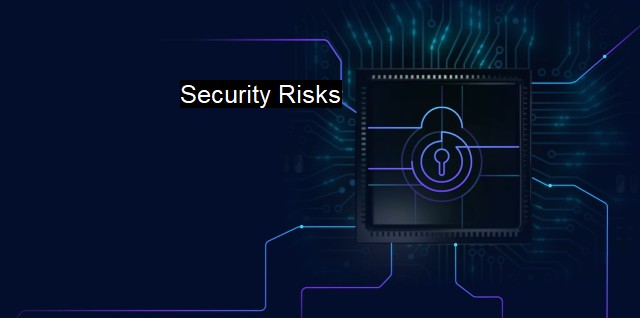What are Security Risks?
Navigating the Digital Landscape: Mitigating Security Risks with Cybersecurity and Antivirus Software
Security risks, with entail a vast spectrum of potential threats that disrupt the safety and privacy of digital platforms, networks, and systems. To understand this clearly, one needs to delve into the very essence of cybersecurity and antivirus systems, their strengths, the varying kinds of security risks, and the consequent threats they expose us to.Cybersecurity represents practices and methodologies designed to safeguard computer systems, networks, and data, often confidential, from unauthorized or unwarranted intrusions. It encompasses constructs like securing information from corruption, maintaining the availability of resources, and ensuring privacy. Antivirus software, by extension, is an integral part of cybersecurity, specifically devised against malicious software, also known as malware. Despite the inherent strength exhibited by contemporary cybersecurity measures, a large array of threats lurks relentlessly exploring methods to exploit weaknesses and slight cracks in the defense.
A key type of security risk is viruses, self-replicating pieces of coding that latch onto clean files in a host device, corrupt them, and often duplicate themselves onto other files or systems. Worms exhibit similar behavior but differ in that they do not need to attach themselves to other files or programs to spread.
Spyware and Adware pose another significant security risk. These deceptive forms of malware inflict somewhat lower-profile damage. They quietly infiltrate targeted systems, often without the user's awareness or explicit consent. Spyware collects personal and confidential information and communicates it elsewhere, while Adware tracks internet usage habits to push unwanted advertisements.
Exploits are another major type of risk, where malicious actors identify and take advantage of software vulnerabilities often unbeknownst to the software provider. This could cause unintentional data breach or unauthorized intervention disturbing the normal operations.
The danger of ransomware cannot be underplayed as they have the potential to restrict access to data by encrypting files, then often demand payment to decrypt or restore them. From individuals to global organizations, numerous entities have unsuccessfully grappled with such ruthless, data-encrypted security threats.
Trojans can be seen as a metaphorically 'trojan horse', which seems harmless initially with the disguise of legitimate software, but subtly carries a malicious activity. Other significant risks include rootkits that enable unauthorized user to get control of a system without being detection.
With the rapid growth of IoT devices, IoT Security risks are also among top concerns in the cyberspace. Attackers exploited IoT vulnerabilities for information theft, DDoS attacks, or even espionage purposes.
Phishing attacks are another common security risk, where attackers masquerade as reputable and trusted entities to lull unwary users into providing sensitive, usually financial, information.
Advancements in cybersecurity and antivirus systems tackling these risks contribute significantly to the mitigation of these cyber threats, constantly tweaking and upgrading to counteract with the evolving risks. comprehending these risks and their potential impacts significantly fortifies our weaponry in responding to such cyber threats. Ensuring timely software updates, incorporating robust password management practices, fostering a deep-seated awareness of potential phishing scams, instituting stringent data access controls all build up into formidable cyber resilience, can mitigate cyber threats and curb digital risks.
As we become increasingly reliant on digital platforms and as technology continues to progress, we must confront numerous vexing enigmas burgeoning in cyberspace. They intrinsically stem from nefarious elements plotting to jeopardize nonnegotiable elements of our cyber interaction—the security, privacy, and sanctity of our data. While the techno-dystopian perspective of this reality may evoke a considerable degree of discomfort or concern, familiarization with security risks, augmented by proper utilization of cybersecurity and antivirus protocols, gestures towards an empowered, secure, and resilient digital world.

Security Risks FAQs
What is a security risk?
A security risk is an event or action that could potentially cause damage, loss, or unauthorized access to sensitive information. These risks include various types of cyber attacks such as malware, phishing, hacking, and data breaches.How can I protect myself from security risks online?
To protect yourself from security risks online, it is crucial to have an up-to-date antivirus software installed on your device. Additionally, make sure you have strong and unique passwords for your online accounts and avoid clicking on suspicious links or downloading attachments from unknown sources. Regularly back up your data and avoid sharing sensitive information on public networks.What are the consequences of a security breach?
The consequences of a security breach can be severe and costly for both individuals and organizations. The breach can result in identity theft, loss of sensitive data, financial losses, and damage to reputation. Additionally, organizations may face legal and regulatory consequences, including fines and lawsuits.What are the key components of a strong cybersecurity plan?
A strong cybersecurity plan includes multiple layers of protection to prevent and respond to security risks. It should include a combination of antivirus software, firewalls, access controls, and data encryption. Regular software updates, employee training, and incident response planning are also critical components of a robust cybersecurity plan.| | A | | | B | | | C | | | D | | | E | | | F | | | G | | | H | | | I | | | J | | | K | | | L | | | M | |
| | N | | | O | | | P | | | Q | | | R | | | S | | | T | | | U | | | V | | | W | | | X | | | Y | | | Z | |
| | 1 | | | 2 | | | 3 | | | 4 | | | 7 | | | 8 | | |||||||